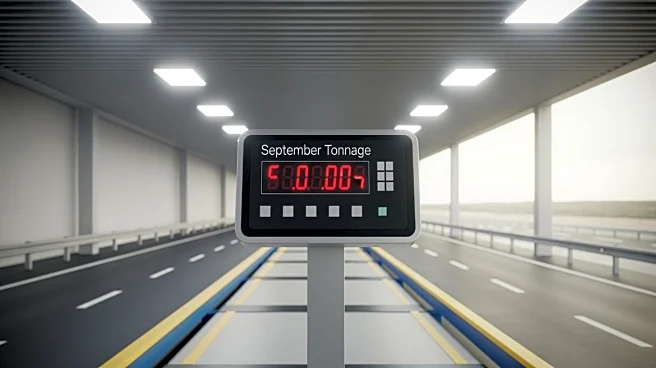What's Happening?
Spot market rates for dry van, refrigerated, and flatbed equipment types have remained mostly steady, with notable year-over-year growth in volumes. According to FTR, dry van spot rates rose by 2 cents after a previous decline, with rates up 0.6% compared
to last year. Dry van loads were flat week over week but showed a 7% increase from the previous year. Refrigerated spot rates increased by 1 cent, with rates 5.4% higher than last year, although refrigerated loads dropped 1.2% week over week. Flatbed spot rates rose slightly, with a year-over-year increase of 1.6%, while flatbed loads dropped 1.1% last week but were up nearly 22% compared to last year. DAT reported similar trends, with national linehaul spot rates for dry van and flatbed remaining unchanged, and refrigerated rates showing a slight increase.
Why It's Important?
The stability in spot market rates and growth in volumes indicate resilience in the logistics sector despite broader economic challenges. The year-over-year growth in dry van and flatbed volumes suggests increased demand for these services, which could be driven by factors such as supply chain adjustments and consumer demand shifts. The steady rates provide a level of predictability for logistics companies, allowing them to plan and manage operations more effectively. This stability is crucial for maintaining profitability and competitiveness in a market characterized by fluctuating costs and evolving customer expectations.
What's Next?
Logistics companies may continue to monitor spot market trends closely to adapt their strategies and optimize operations. The focus will likely be on leveraging data and technology to enhance efficiency and meet growing demand. As the market evolves, companies that can effectively manage rates and volumes will be better positioned to capitalize on opportunities and navigate potential disruptions. The ongoing analysis of market conditions will be essential for making informed decisions and maintaining a competitive edge.













